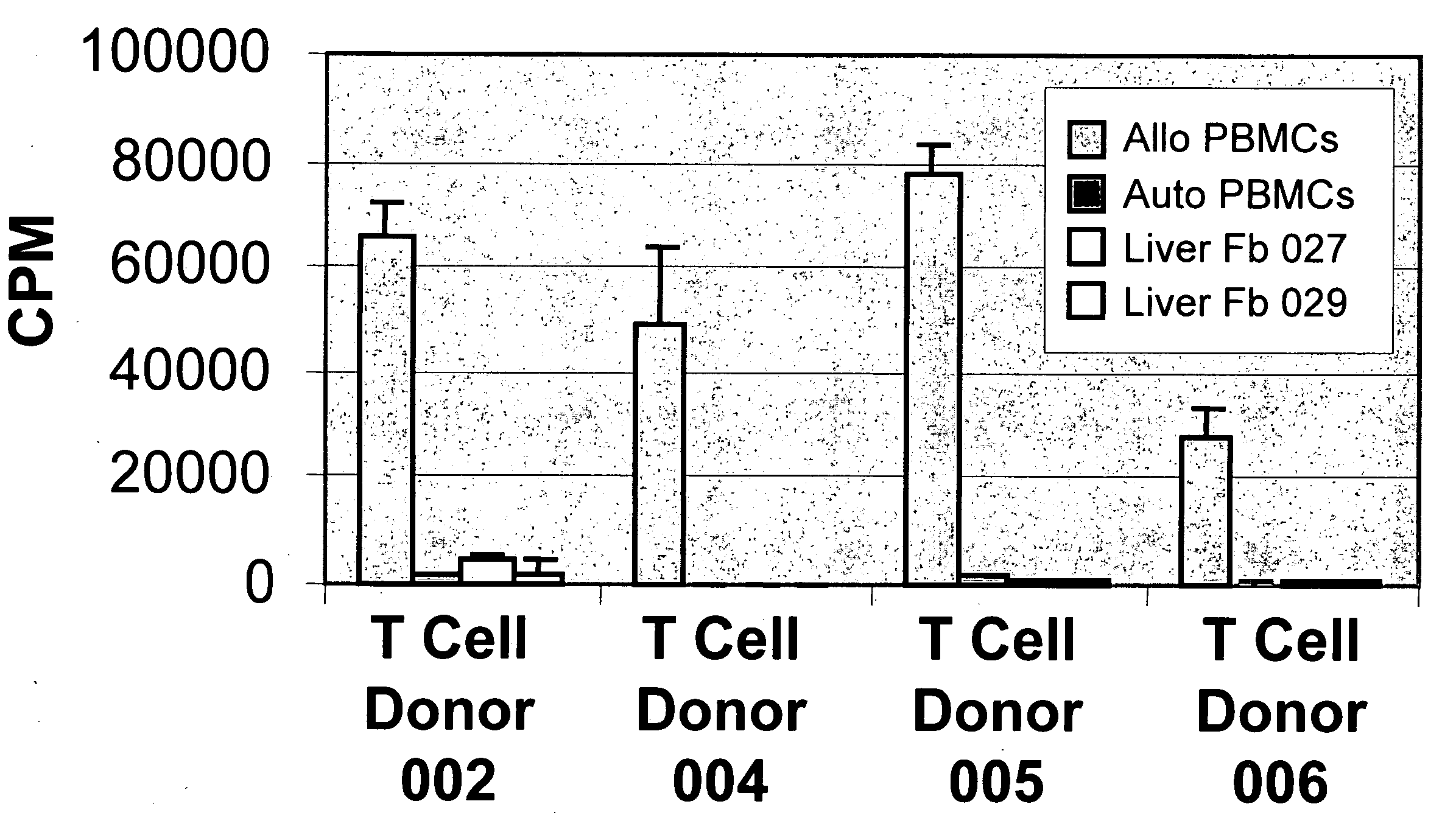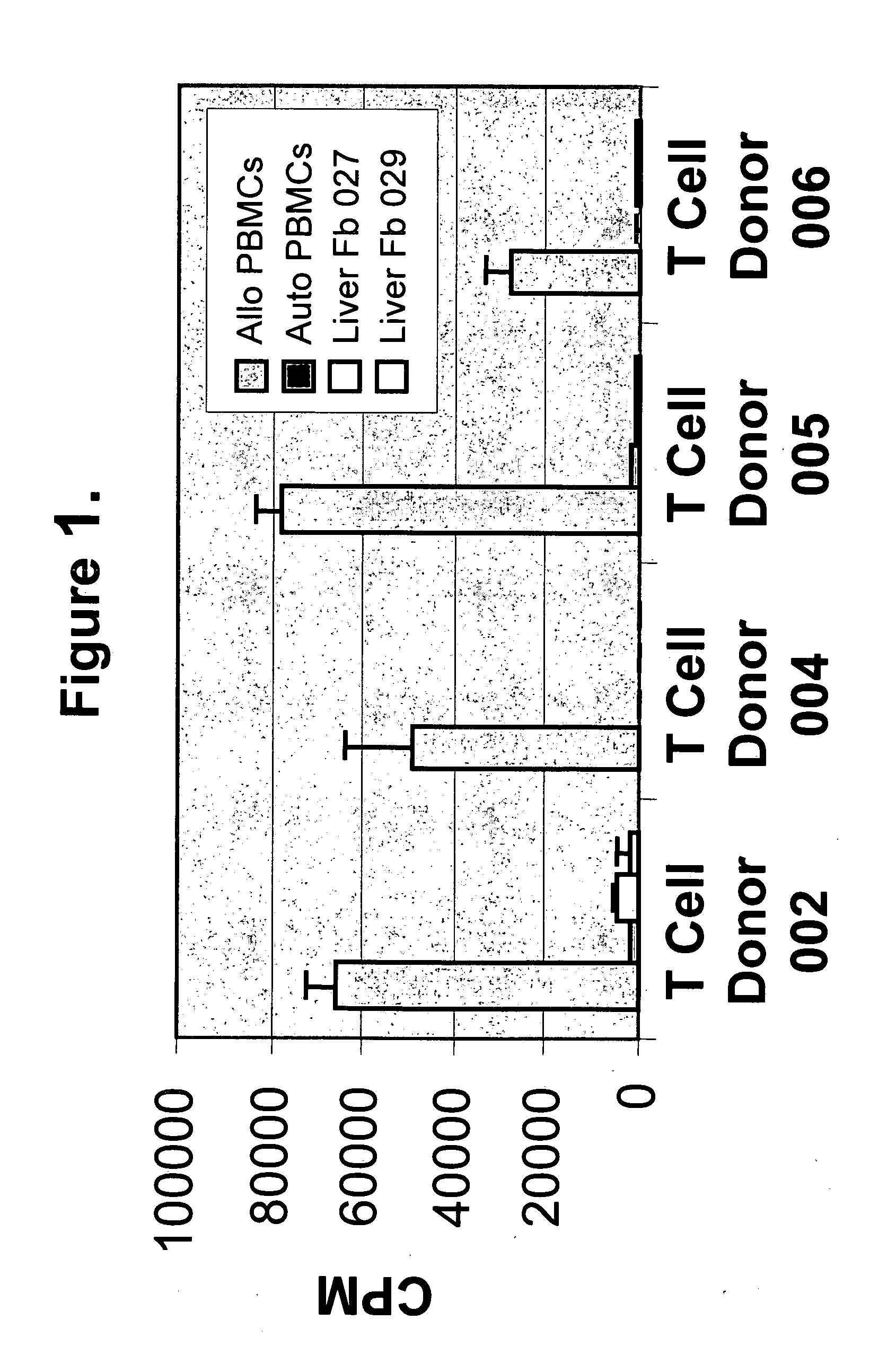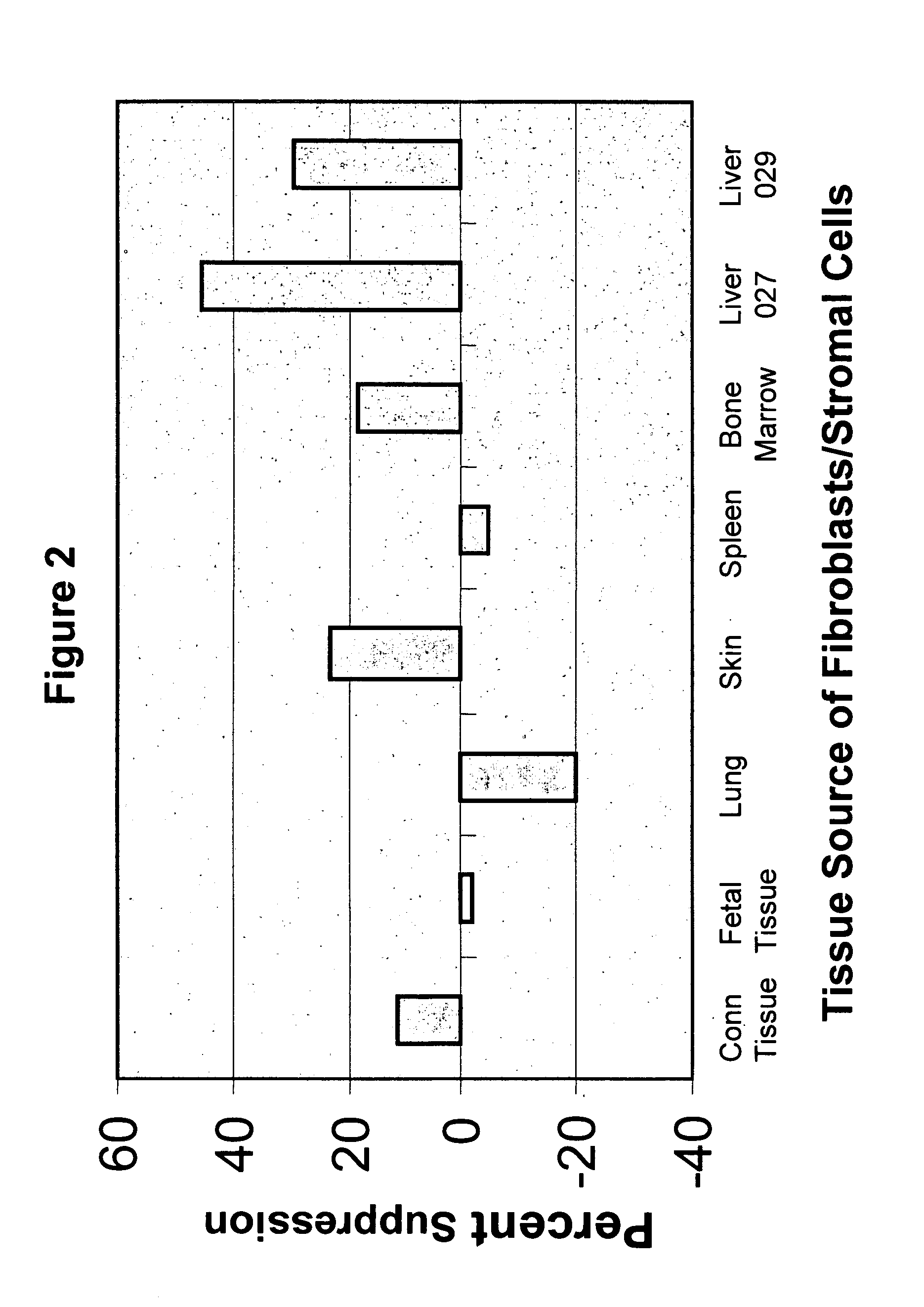Liver stromal cells for prevention and treatment of immune responses in transplantation
a technology of liver stromal cells and transplantation, which is applied in the direction of immunological disorders, drug compositions, antibody medical ingredients, etc., can solve the problems of invariably high risk of graft rejection, the same immune system can produce undesirable effects, and the transplantation of cells, tissues and organs between genetically disparate individuals, etc., to reduce the use of immunosuppressive drugs, reduce the severity of the immune response, and alleviate the effect of general immune suppression and unwanted side effects
- Summary
- Abstract
- Description
- Claims
- Application Information
AI Technical Summary
Benefits of technology
Problems solved by technology
Method used
Image
Examples
example 1
Characterization of Liver Stromal Cells
Production of LSCs
[0133] Adult cadaveric human livers from different donors designated Hu027 and Hu029 were used. The liver was perfused via portal vein and hepatic artery with EGTA-containing buffer for 15 minutes and 0.06% collagenase (Sigma Chemical Company, St. Louis, Mo.) for 30 minutes at 34° C. The cells were then passed through 1000, 500, 250 and 150 μm filters. Viable cells were fractionated under 500×g with COBE cell processor (Gambro BCT, Lakewood, Colo.) using 2-step (9% and 17%; Hu027 and Hu029 cells) or 12.5% (H0107 cells) OptiPrep gradients (Axis-Shield PoC AS, Oslo, Norway). Cells were frozen in medium containing 80% Hypothermosol (Bio Life Solutions Inc, Binghamton, N.Y.), 10% human AB serum and 10% dimethylsulfoxide (Sigma) for storage in liquid nitrogen.
[0134] For culturing, the cyropreserved liver stromal cells were thawed and counted. The cultures were seeded at about 1.62×106 cells / cm2 in complete medium (DMEM low gluc...
example 2
Immunogenicity of Liver Stromal Cells
[0141] The experiments presented herein demonstrated that LSCs expressed novel immunological characteristics in vitro. For example, LSCs were found to be non-immunogenic when mixed with allogeneic T cells, as it was observed that LSCs when contacted with allogeneic T cells did not induce the T cells to proliferate as compared with the amount of proliferation of T cells when contacted with allogeneic PBMCs. Also, it was discovered that LSCs were immunosuppressive for alloreactive T cell responses. Similar immunological characteristics have been described for mesenchymal stem cells (MSCs) (Di Nicola et al., 2002 Blood 99:3838; Tse et al. 2003 Transplantation 75:389; Le Blanc et al. 2003 Scand. J. Immunol. 57:11), but not for the majority of fibroblast populations derived from different tissue sources.
[0142] The materials and methods used in the experiments presented in this Example are now described.
MLR Assays
[0143] The immunogenicity of LSCs ...
example 3
Liver Stromal Cells in Transplantation
[0153] Given that LSCs suppress alloreactive T cell responses, as discussed elsewhere herein, LSCs can be co-transplanted with immunogenic cells, tissues, or organs to prevent immune rejection of the transplanted material. An advantage to this approach over those currently used in the art is that the cells can be used to establish restricted areas of immune privilege in the area of transplant without generalized suppression of the immune system which can be detrimental to the host.
[0154] The immunosuppressive properties of LSCs can be exploited to enhance the survival of transplanted cells, tissues, or organs. Without being bound to any particular theory, it is believed that LSCs delivered to a tissue / organ would create a localized area of immunosuppression or immune privilege which would aid in engraftment of cells, tissues, or organs. Although immune tolerance may be induced under these conditions, it is not required for the successful use o...
PUM
| Property | Measurement | Unit |
|---|---|---|
| concentration | aaaaa | aaaaa |
| temperatures | aaaaa | aaaaa |
| temperatures | aaaaa | aaaaa |
Abstract
Description
Claims
Application Information
 Login to View More
Login to View More - R&D
- Intellectual Property
- Life Sciences
- Materials
- Tech Scout
- Unparalleled Data Quality
- Higher Quality Content
- 60% Fewer Hallucinations
Browse by: Latest US Patents, China's latest patents, Technical Efficacy Thesaurus, Application Domain, Technology Topic, Popular Technical Reports.
© 2025 PatSnap. All rights reserved.Legal|Privacy policy|Modern Slavery Act Transparency Statement|Sitemap|About US| Contact US: help@patsnap.com



